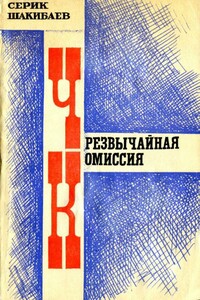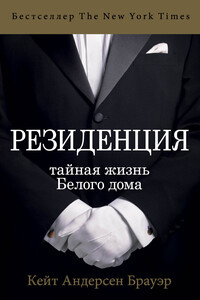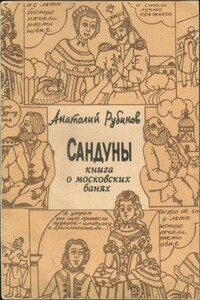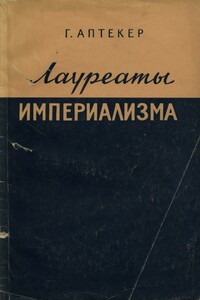The Run of His Life: The People v. O. J. Simpson - [11]
Parker became chief in 1950, when Los Angeles was in the midst of a period of spectacular postwar growth. At that point the city was no longer, in H. L. Mencken’s phrase, “a double Dubuque”-an insular, nearly all-white outpost of the Midwest on the Pacific Ocean. But if Los Angeles was changing, the LAPD was not. Parker’s model for his force was the Marine Corps, and so the police became tantamount to an army of occupation for those in the city who did not share Parker’s ethnic heritage. As far as the rest of the world was concerned, though, the LAPD under Bill Parker became known as a model of efficiency and skill. This did not happen by accident. Shortly after Parker took charge, he became acquainted with a young radio producer named Jack Webb. In 1949, Webb had started a radio series, Dragnet, based on the exploits of the LAPD. At first Parker was suspicious of the show, worried that it might place his beloved department in an unflattering light. Aware of his discomfort, Webb proposed a deal: In return for the LAPD’s cooperation, he would give the department the right to approve every script. Parker’s suspicions eased. When Dragnet moved to television, Parker understood just how advantageous an arrangement he had struck. Sergeant Joe Friday became the paradigm of what Parker wanted in an LAPD officer: an incorruptible white man who, with scientific detachment, descended on neighborhoods where he had no personal or emotional ties to clean up the messes made by the vaguely distasteful residents of the city. Soon Parker was only too happy to have Dragnet conclude each week with the announcement “You have just seen Dragnet, a series of authentic cases from official files… Technical advice for Dragnet comes from the offices of Chief of Police W. H. Parker, Los Angeles Police Department.” Jack Webb, who later wrote an admiring biography of Parker, had created one of the longest-lived genres in television programming, the L.A. police drama, which has included, at various times, The Mod Squad, Adam 12, Felony Squad, Blue Thunder, S.W.A.T., Strike Force, Chopper One, The Rookies, Hunter, and T. J. Hooker. As Joe Domanick wrote, “For twenty-five consecutive seasons at least one LAPD police show was being aired on network television.” They portrayed the LAPD in a manner that made Bill Parker proud.
Parker and his wife never had children, and the chief remained aloof from most of his colleagues on the force. He did, however, take a special shine to the young officer who was assigned to be his personal chauffeur-Daryl Gates. Together the two men refined a theory of “proactive policing,” which featured relentless confrontations between heavily armed officers and the hostile populations they patrolled. Parker and Gates came of age in an era when white cops didn’t have to rein in their feelings about African-Americans. When Watts exploded in 1965-a rebellion set off by a confrontation between a black motorist and a uniformed officer of the California Highway Patrol-Parker compared the black rioters to “monkeys in a zoo.” A year later, a black man named Leonard Deadwyler was rushing his pregnant wife to the hospital when he was stopped by police for speeding. In the ensuing confrontation, the unarmed Deadwyler was shot dead. “Police are not supposed to stand by and watch a car speeding down the street at eighty miles per hour,” Parker explained. “[The officer] did something he thought would successfully conclude a police action. All he is guilty of is trying to do his job.”
True to the intent of the civil-service law, Parker served until he died, and Gates took over as chief in 1978. The selection process that led to Gates’s appointment seemed designed as a direct affront to the city’s black community: To head the internal review of candidates for the job, the LAPD brought in Curtis LeMay, the far-right-wing former air force general who had served as George Wallace’s running mate in 1968 and earlier had promised to bomb North Vietnam “back to the Stone Age.”
After Gates took over, the list of black victims of the LAPD grew ever longer. In 1979 Eulia Love, a thirty-nine-year-old black widow who was late in paying her gas bill, hit a meter reader on the arm with a garden shovel. The utility man summoned police officers, who, rather than defuse the situation, shot Love dead at pointblank range. In 1982, after a number of African-American men died from police choke holds, Gates observed that the deaths might have been caused by the distinctive physiology of the black victims: “We may be finding that in some blacks when [the choke hold] is applied, the veins or arteries do not open up as fast as they do on normal people.” It mattered little that Los Angeles had had a black mayor, Tom Bradley, since 1973. The LAPD answered to no one.
A raid on a suspected narcotics operation in August 1988 may have been the paradigmatic LAPD operation. About eighty police officers (and one helicopter) swooped in on four apartments in two small buildings at Thirty-ninth Street and Dalton Avenue, on the periphery of the South Central district. The officers, armed with shotguns and sledgehammers, barreled through the rooms. They tore plumbing out of the walls, ripped a stairway from its moorings, pulled carpet from the floor, destroyed furniture and appliances, and kicked and punched the stunned residents. For all the terror it unleashed, the raid netted only two minor drug arrests. Nevertheless, the officers on the scene did find reasons to take thirty-two residents of the complex back to the local precinct, where the captives were forced to whistle the theme song from the 1960s situation comedy

Автор — полковник, почетный сотрудник госбезопасности, в документальных очерках показывает роль А. Джангильдина, первых чекистов республики И. Т. Эльбе, И. А. Грушина, И. М. Кошелева, председателя ревтрибунала О. Дощанова и других в организации и деятельности Кустанайской ЧК. Используя архивные материалы, а также воспоминания участников, очевидцев описываемых событий, раскрывает ряд ранее не известных широкому читателю операций по борьбе с контрреволюцией, проведенных чекистами Кустаная в годы установления и упрочения Советской власти в этом крае. Адресуется массовому читателю и прежде всего молодежи.

Повседневная жизнь первой семьи Соединенных Штатов для обычного человека остается тайной. Ее каждый день помогают хранить сотрудники Белого дома, которые всегда остаются в тени: дворецкие, горничные, швейцары, повара, флористы. Многие из них работают в резиденции поколениями. Они каждый день трудятся бок о бок с президентом – готовят ему завтрак, застилают постель и сопровождают от лифта к рабочему кабинету – и видят их такими, какие они есть на самом деле. Кейт Андерсен Брауэр взяла интервью у действующих и бывших сотрудников резиденции.

Переписка Стефана Цвейга с издательством «Время» продолжалась на протяжении почти девяти лет и насчитывает более сотни писем. Письма Цвейга равно как и все письма издательства к нему в своей совокупности, с учетом продолжительности переписки, представляют собой любопытный документ деловых отношений периода декларировавшегося идеологического, культурного и политического противостояния Советской России и «буржуазной» Европы.

«Иногда на то, чтобы восстановить историческую справедливость, уходят десятилетия. Пострадавшие люди часто не доживают до этого момента, но их потомки продолжают верить и ждать, что однажды настанет особенный день, и правда будет раскрыта. И души их предков обретут покой…».

Не каждый московский дом имеет столь увлекательную биографию, как знаменитые Сандуновские бани, или в просторечии Сандуны. На первый взгляд кажется несовместимым соединение такого прозаического сооружения с упоминанием о высоком искусстве. Однако именно выдающаяся русская певица Елизавета Семеновна Сандунова «с голосом чистым, как хрусталь, и звонким, как золото» и ее муж Сила Николаевич, который «почитался первым комиком на русских сценах», с начала XIX в. были их владельцами. Бани, переменив ряд хозяев, удержали первоначальное название Сандуновских.

Предлагаемая вниманию советского читателя брошюра известного американского историка и публициста Герберта Аптекера, вышедшая в свет в Нью-Йорке в 1954 году, посвящена разоблачению тех представителей американской реакционной историографии, которые выступают под эгидой «Общества истории бизнеса», ведущего атаку на историческую науку с позиций «большого бизнеса», то есть монополистического капитала. В своем боевом разоблачительном памфлете, который издается на русском языке с незначительными сокращениями, Аптекер показывает, как монополии и их историки-«лауреаты» пытаются перекроить историю на свой лад.